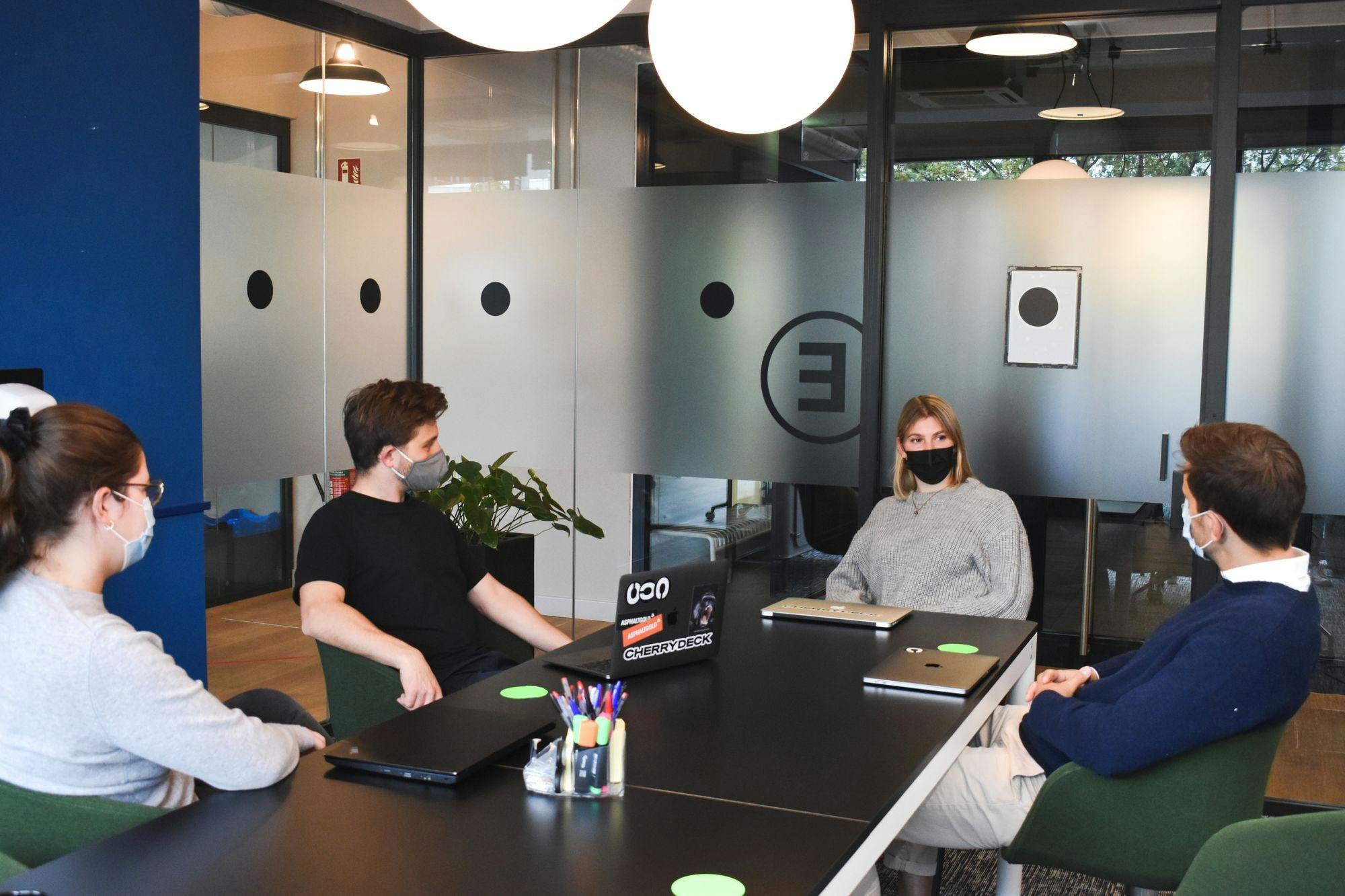
Despite the wishes of many, the traditional office isn’t going away. But the traditional concept of an office is changing. Employers are looking to find a balance between getting employees back to the office without creating a public health risk.
Here’s a look at the post-pandemic office standards and trends gaining in popularity to keep your office COVID safe.
1) Maintain Safety Protocols
Many of the safety protocols established during the pandemic will live on. Relatively low-cost items such as hand sanitizer, cleaning wipes, and regular disinfecting will continue. These are no-brainers. They increase overall safety and decrease the chance of virus spread. Depending on the local situation, temperature checks upon arrival might also be reinstated.
At the same time, it’s important not to overcorrect and damage employee engagement. For instance, adding plexiglass in high contact areas or in a certain parts of the office makes sense, but surrounding every employee in a clear cage of solitude isn’t the answer. It's important to find a balance between safety protocols and comfort for employers looking to encourage employees back to the office.
2) Monitor the Vaccine Situation
The burning question as soon as the vaccine rollout began was: can employers mandate the vaccine? The short answer is yes. The U.S. Equal Employment Opportunity Commission (EEOC) issued guidance that employers can generally mandate COVID-19 vaccines that were approved or authorized by the FDA (the major vaccines received an emergency use authorization).
The CDC says requiring vaccinations are a matter for private businesses to decide, assuming the absence of local, state, and federal laws. There’s a large collection of laws around the country aimed at preventing employers from requiring “vaccine passports”. Nothing is preventing an employee from launching a lawsuit over vaccine protocols, which is why employers such as Kroger, Target, and Petco opted for financial incentives instead of requirements. Employers must think carefully about the vaccination issue — ideally a solution is determined through steady communication and feedback sharing.
3) Keep Your Office Low-Occupancy and Allow for Flexible Headcount
For the most part, the mandated remote work situations of 2020 validated remote working as a realistic long-term option. Productivity was maintained and costs were down. Therefore the office of the future is likely to be designed for less occupancy. Many companies will maintain their physical office, but allow workers to work remotely more often. Office designs for lower occupancy, and a varying amount of occupants, require some new features.

Smart catering: Feed the office without worrying about order limits or how many people will be in attendance on a given day. CaterCow connects you with vetted, local restaurants that provide individually-wrapped meals. You can order on behalf of your team or group order so you don't have to guess how many people are coming in.
Touchdown areas - A large number of offices within a floor is a waste of space when they’re not used every day. Office architects are recommending touchdown areas as a replacement. These are rooms the size of small conference rooms with a one to three desks designed for drop-in use. These areas provide a quiet work area for those looking for it.
4) Invest in Building Resources and Modifications
The office of the future won’t come overnight, as many of the proposed changes are drawn up in blueprints and architecture meetings. There are some changes that office managers can make now depending on their relationship with the building and/or facilities manager.
HVAC System: Ventilation is one of the biggest factors for indoor virus spread. Office managers should determine if their office system meets modern standards, and if there are other ways to improve ventilation throughout the office.
Windows & Airflow: Besides the HVAC system, natural airflow is key for circulating clean air. The natural solution is to open windows, however this becomes an energy consumption problem during summer months. Companies are pursuing highly efficient windows to solve this problem. Weather permitting, some employers are setting up outdoor work areas on patios.
Handwashing Stations: Provide employees with abundant handwashing opportunities and reminders. Portable handwashing stations can be installed in building lobbies or near entrances and exits.
Plants: A simple but effective update for modern offices is of course, plants. Greenery is good for the environment and provides employees with a homey feeling that incentivizes them to leave the house. Make sure watering is added to the to-do list!

5) Consider a WELL Certification
For employers looking to make their new office design a true competitive advantage, WELL certification might be the answer. Just as LEED certification provides standards for sustainable office buildings, WELL certification sets health and well-being standards for workplaces. WELL certification is designed around 10 concepts that range from air, water and light to thermal comfort. Cundall London, a multi-discipline consultancy, demonstrated an ROI through WELL certification by reducing the amount of sick leave requested within three months.



